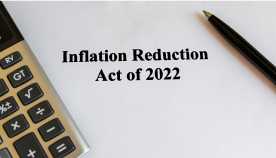AARP Eye Center
Important dates and election information
Key dates

- Wednesday, October 16: First day of in-person absentee voting
- Monday, Oct. 21: Voter preregistration deadline
- Monday, Oct. 21: Last day to request an absentee ballot by mail
- Monday, Nov. 4: Last day to vote an in-person absentee ballot
- Tuesday, Nov. 5: General election
Voting at a glance
- Voter registration: Preregister to vote by Monday, Oct. 21, or register on Election Day at your county polling place. Check your registration status using the state’s online tool.
- Absentee voting: Any registered voter may request an absentee ballot through their county auditor.
- Early in-person voting: You may cast an absentee ballot in person at your county auditor’s office or at a satellite absentee voting station, up until Election Day.
- Voting at the polls: Polls are open from 7 a.m. to 8 p.m. Find your polling place using the secretary of state’s online tool.
What to know about recent changes
If voting absentee, you may designate an immediate family member or member of your household to return your ballot. Under a new law, it’s mandatory for the designated individual to issue the voter a receipt.
How to register to vote
The deadline to preregister is Monday, Oct. 21. You can preregister:

- Online: Use the state’s voter registration portal.
- By mail: Print and complete a voter registration form, and mail it to your county auditor.
- In person: Go to your county auditor’s office or a voter registration agency, such as the Office of Persons With Disabilities or a U.S. armed forces recruiting office.
If preregistering online, you’ll need either your Iowa driver’s license or state ID number and the last five digits of your Social Security number. If preregistering by mail or in person, you’ll need your driver’s license, state ID number or the last four digits of your Social Security number.
Check your voter registration status
Check your registration status using the state’s online tool.
Registering to vote on Election Day
You can register on Election Day at your county polling place. You must present a valid form of photo ID, such as an Iowa driver’s license or a U.S. passport, as well as proof of residence if your photo ID doesn’t contain your current address. For a list of what’s accepted, visit the secretary of state’s website.
If you don’t have sufficient documentation, another registered voter who lives in the same precinct may attest to your identity and residence. You’ll both be required to sign an oath swearing the statements are true.
How to request an absentee ballot
Any registered voter can request an absentee ballot from their county auditor. Make a request:
- Online: To receive a ballot by mail, download an Absentee Ballot Request Form, complete it and return it to your county auditor’s office by 5 p.m. on Monday, Oct. 21. You must provide an Iowa driver’s license or state ID number, or a four-digit Voter PIN from your Iowa Voter ID Card. Any voter may request an Iowa Voter ID Card by contacting their county auditor’s office.
- In person: Visit your county auditor’s office to request an absentee ballot as soon as they’re ready. Absentee ballots will be available no earlier than Wednesday, Oct. 16, for in-person voting. You may also visit a satellite absentee voting station to request an absentee ballot. Contact your county auditor’s office to find satellite station hours and locations. You cannot take home an absentee ballot you request in person. You must complete it on-site. The last day to vote absentee in person is Monday, Nov. 4.
Returning a by-mail absentee ballot
Use the provided postage-paid return envelope supplied by the county auditor to mail or to drop off your absentee ballot to your county auditor’s office. Your ballot must be received by 8 p.m. on Election Day.
Voting at the polls on Election Day
Polls are open from 7 a.m. to 8 p.m on Election Day, Tuesday, Nov. 5. Find your polling place using the secretary of state’s online tool.
Find sample ballots on your county auditor’s website or at your county auditor’s office.
Voter ID requirements on Election Day
Before voting, you must show an Iowa driver’s license or state ID, U.S. passport, tribal ID or documentation, U.S. military ID or veteran’s ID, or Iowa Voter ID Card.
If you can’t provide a valid ID, another registered voter who lives in the same precinct may attest to your identity and residence. If you don’t have ID or a person to vouch for your identity, you’ll be offered a provisional ballot. For a provisional ballot to be counted, you must provide ID to your county auditor’s office by Tuesday, Nov. 12.
Voting with a disability
Each polling place is equipped with an accessible voting system for individuals with disabilities. If you need help marking your ballot, you can ask any person for assistance, excluding your employer, employer’s agent or an officer/agent of your union. You may also request help from two election officials (one from each major political party).
Curbside voting is available to voters with disabilities who are unable to enter the polling place. If requesting curbside voting, you’re encouraged to call your county auditor’s office in advance.
Find more information at the secretary of state’s website.
Voting options for health care facility residents
If you live in a designated health care facility or are currently residing in a hospital, you may request an absentee ballot, and a bipartisan team of election officials will hand-deliver the ballot, wait while you complete it and return it to the county auditor’s office.
If you’re admitted to a health care facility after the absentee ballot request deadline (5 p.m., Monday, Oct. 21), you may contact the county auditor directly to request an absentee ballot.
Editor’s note: This guide was originally published Jan. 6, 2024, and updated with new information about voting in the 2024 elections.
Grace Dickinson is a writer for aarp.org who covers federal and state policy. She previously wrote for The Philadelphia Inquirer. Her work has also appeared on sites including HuffPost and Eater.
Also of Interest:
- "Cruisin' for Caregivers" Candidate Conversations
- Follow AARP’s political coverage
- Keep up with local events and AARP advocacy efforts
- Find voter guides for all 50 states
- Learn more about AARP’s caregiving advocacy work























































